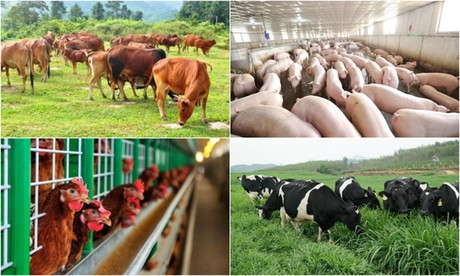VIM - Viet Nam expects to have an advanced livestock industry by 2030, according to the national animal husbandry development strategy for 2021-2030, with a vision to 2045, approved recently by the Prime Minister.
The general goal of the strategy is to industrialize, modernize and sustainably develop the industry as well as improve its competitiveness.
The annual growth rate of the production value is expected to reach 4-5% per year between 2021-2025 and an average of 3-4% annually during the period 2026-2030.

Under the strategy, proportions of cattle and poultry slaughtered at industrial and concentrated facilities will be 60% and 40%, respectively, by 2025, and 70% and 30% by 2030. The proportion of processed cattle and poultry meat will represent 25-30% of the total meat production by 2025 and 40-50% in the next five years.
In addition, disease-free farming areas will be built, with at least 10 at the district level by 2025 and a minimum of 20 by 2030.
By 2045, Viet Nam’s animal husbandry industry is set to become a modern technical economic sector that is industrialized in almost all stages from production, processing and preservation to connecting product consumption markets.
Besides, the industry will have its production qualification and capacity among the leading countries in Southeast Asia, as well as effectively controlling dangerous infectious disease and zoonotic diseases.
Most of the major livestock products such as meat, eggs and milk will be produced in biosecure and environmentally friendly establishments, while 100% of meat commodity products will be supplied from industrial and concentrated slaughterhouses.
Under the strategy, over 70% of the major livestock products will undergo preliminary processing and industrial processing, with about 30% to be intensively processed.
To achieve the aforementioned goals, the strategy has set out a number of solutions, including finalizing groups of policies on livestock development (concerning land, finance, credit, trade, agricultural extension and communication); strengthening capabilities in disease prevention and control and environmental protection; boosting the application of science and technology and international cooperation; improving the productivity and quality of livestock breeds; improve the quality and lowering prices animal feed; enhancing the slaughter capacity and processing of livestock products; and developing supporting industries for the animal husbandry sector./.





